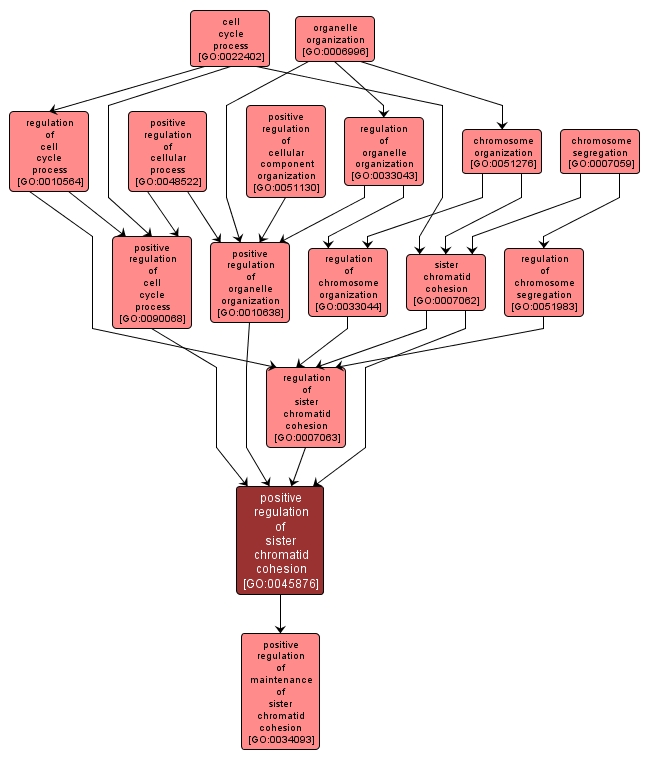GO TERM SUMMARY
|
| Name: |
positive regulation of sister chromatid cohesion |
| Acc: |
GO:0045876 |
| Aspect: |
Biological Process |
| Desc: |
Any process that activates or increases the frequency, rate or extent of sister chromatid cohesion. |
Synonyms:
- activation of sister chromatid cohesion
- up-regulation of sister chromatid cohesion
- upregulation of sister chromatid cohesion
- up regulation of sister chromatid cohesion
- stimulation of sister chromatid cohesion
|
|

|
INTERACTIVE GO GRAPH
|














